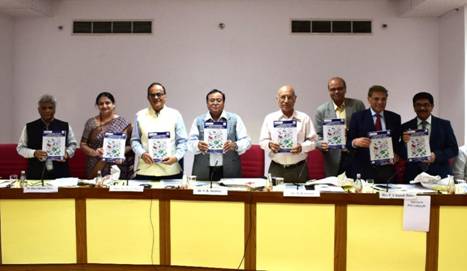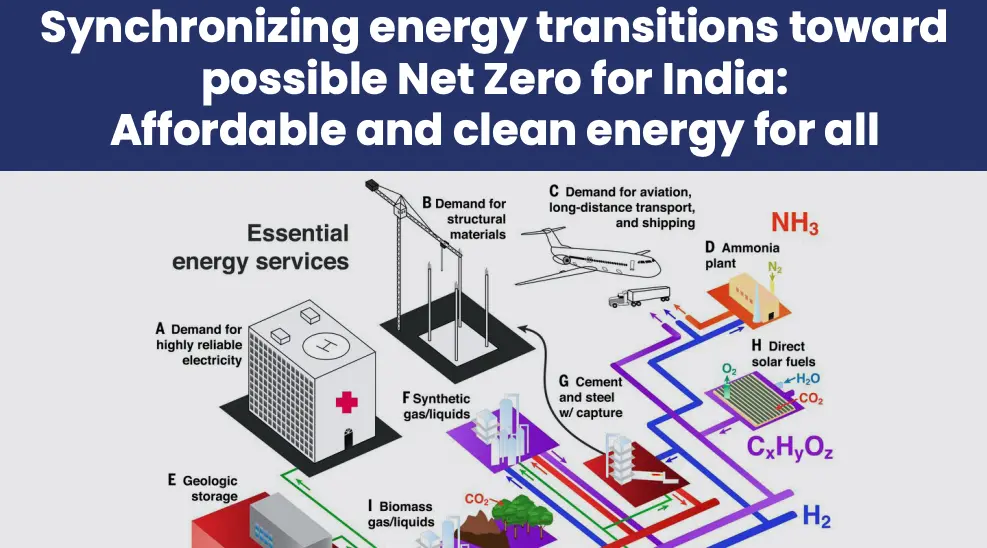Launch of the report on Synchronizing energy transitions towards possible Net-Zero for India
3rd April, 2024, New Delhi: A meeting was held for the launch of the report titled “Synchronizing energy transitions towards possible Net-Zero for India: Affordable and clean energy for All” prepared by IIM Ahmedabad as part of a study project which was sanctioned in November 2021 by the Office of the Principal Scientific Adviser to the Government of India with part-funding (one-third) from Nuclear Power Corporation of India Ltd (NPCIL).
A need was felt to undertake an analytical study on the energy transition required towards a net-zero energy basket for India. Accordingly, the study was sanctioned with the objective of conducting a comprehensive study with rigorous methods for minimizing the cost of power at consumer end and to work out an optimum mix for all sources of power, aiming for net-zero emission.
The report attempts to answer key questions related to India’s energy transition trajectory such as
- how much energy does India need to achieve high value of Human Development Index (HDI);
- what are pathways to achieve this;
- what are the energy mix projections for this until 2070 (our declared net-zero target year);
- what would be the cost of electricity to the end user;
- what would be the carbon emissions until 2070;
- what would be the investments required for energy transitions towards net-zero at 2070;
- estimation of other challenges and opportunities (RE integration, requirement of critical minerals, Carbon Capture Utilisation and Storage (CCUS), natural gas, ethanol, hydrogen) in energy transitions towards achieving net-zero in 2070.


The main conclusions of the Synchronizing energy transitions towards possible Net-Zero for India Report are given below:
- There is no silver bullet to achieve net-zero. The transition needs multiple pathways to be adopted with co-existence of myriad technologies in our energy basket.
- Coal is projected to continue until the next two decades as the backbone of the Indian energy system.
- Net-zero is not possible without substantial nuclear power and Renewable Energy (RE) generation by 2070.
- To achieve net-zero energy systems by 2070, the electricity sector will need to decarbonize well before that.
- India’s emissions would range between 0.56 btCO2 and 1.0 btCO2 in 2070. It is expected that the remaining gap in emissions will be offset through sequestration in forestry and tree cover as envisaged in our Nationally Determined Contributions (NDCs).
- Additionally, the coal phase-down will require active policies on critical minerals and carbon dioxide removal technologies.
- Clean, affordable electricity at low levelized cost of electricity (for consumers) can be achieved in net-zero pathways, especially with a focus on nuclear power and renewable power.
- Widespread electrification of end-use sectors i.e upto 47-52% electricity share in Total Final Electricity Consumption (TFEC) compared to 18% at present.
- Financial requirements during 2020-2070 would be to the tune of Rs 150-200 lakh Crore (about US$ 2-2.5 trillion, or US$ 40-50 billion/year). Considerable financial flows must be international.


